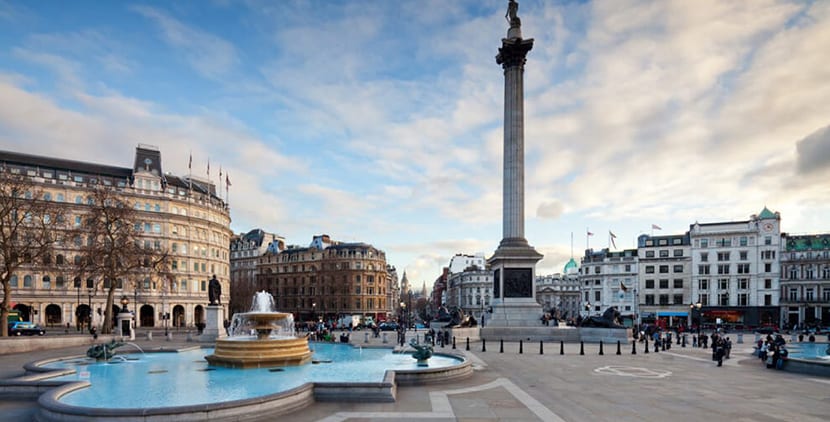
London it is the cosmopolitan city par excellence. I think that in this sense it surpasses New York, and although today immigration is a whole issue, the ethnic richness of the arrivals in recent decades has given it a unique and brilliant stamp.
One of the emblematic sites of the English capital is Trafalgar Square, a square of those that you can not miss.
Trafalgar Square
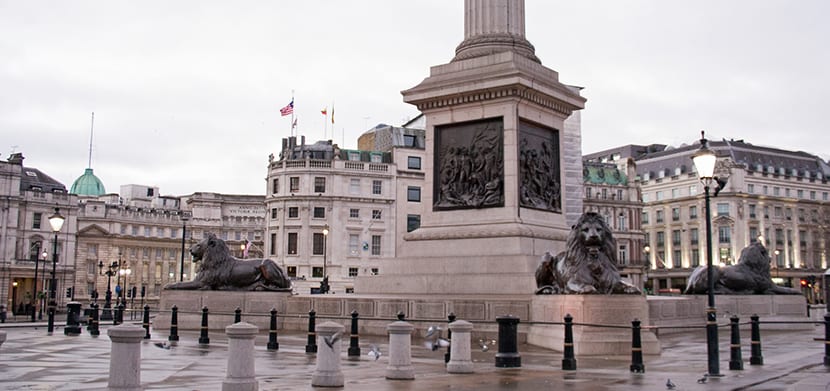
Trafalgar Square is in central london and as its name indicates it has been baptized thus in honor of the Battle of Trafalgar starring the army of Napoleon and the English Navy. This naval battle took place on 21th October 1805 and on the side of the United Kingdom, Sweden, Naples, Austria and Russia were also fighting against, obviously, Napoleon.
The Battle of Trafalgar takes place off the coast of the Cape of that name, in Cádiz, Spain, and the hero of it ends up being Vice Admiral Nelson. This information is basic when it comes to getting to know the square. Square that, it is worth saying, existed before the important battle but had another name: Guillermo IV.
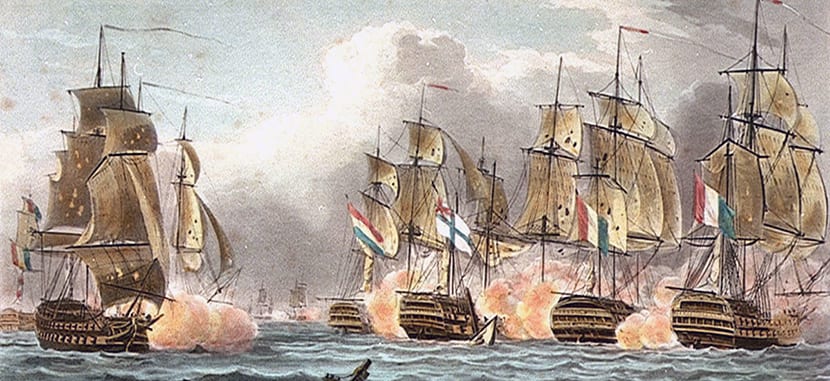
Some time later, around 1820, King George IV commissioned the fashionable architect, John Nash, to develop this part of London and it was then that it acquired its current appearance. Over time it also became epicenter of demonstration and popular festivals.
The square has the following shape: it has a heart and streets come from three of its sides, while in the fourth there are stairs that lead to the National Gallery. A little more than ten years ago, cars could cross the square through one of these streets but it is no longer possible, and today the crossings are underground.
What to see in Trafalgar Square
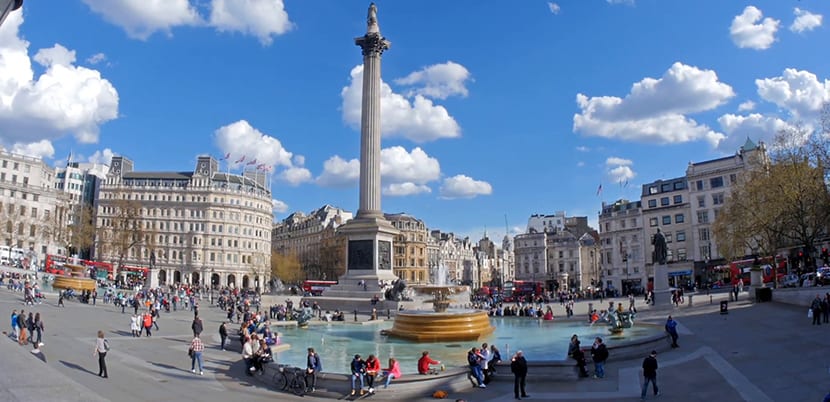
In principle, the Nelson's column. It is a work by William Railton and honors the deed of Horatio Nelson, the British admiral who took victory in the Battle of Trafalgar but also death. The column is a work of 1840 when his death is commemorated, and has 46 meters high. It is made of granite and supports a statue of Nelson that in turn reaches 5,5 meters high.
La Nelson statue look south towards the Palace of Westminster. In turn, the column has a Corinthian-style capital, inspired by the Forum of Augustus in Rome, and decorated with bronze sheets that were extracted from cast British cannons.

It also has a square-shaped pedestal with panels that tell of Nelson's four victories: Trafalgar, but also Conpenhague, Cabo de San Vicente and Nilo. These panels, which number four, were made with the cast bronze of the captured French weapons. . You will also see some lions, with the signature of the artist Edwin Landseer, on the base of the column, and made of bronze from the foundry of Spanish weapons.
Nelson's Column is inspected every two years for maintenance, cleaning, and necessary repairs. Pigeon poop is removed, wax is put on the bronzes, that sort of thing. Besides this monument the square has some fountains which were added to the ensemble in 1845. They have mermaids, mermen, and dolphins but they appeared a little later. It is rare that the sources are not working.
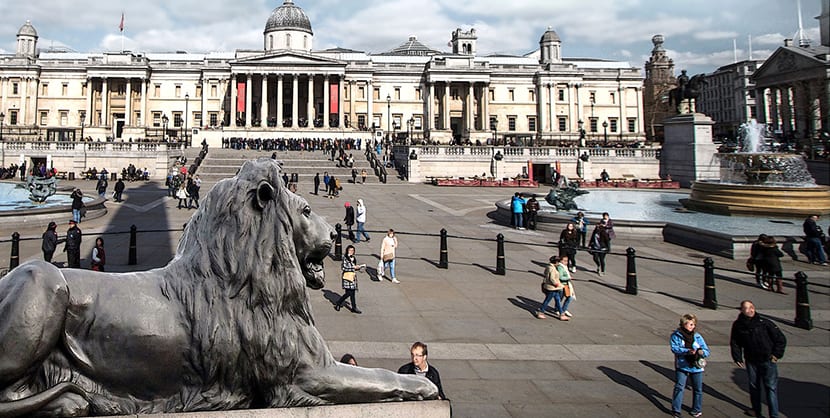
In turn there is statues in the square. The bronze statues belong to General Sir Charles James Napier, located to the south-west, Major General Sir Henry Havelock, to the south-east, and King George IV to the northeast of the square. There is a fourth plinth in the plaza that is empty. It is known as Fourth Plintio, which after never placing the statue of William IV, was left empty. You see it in the northwest of it and its content varies. The current one has to do with contemporary art.
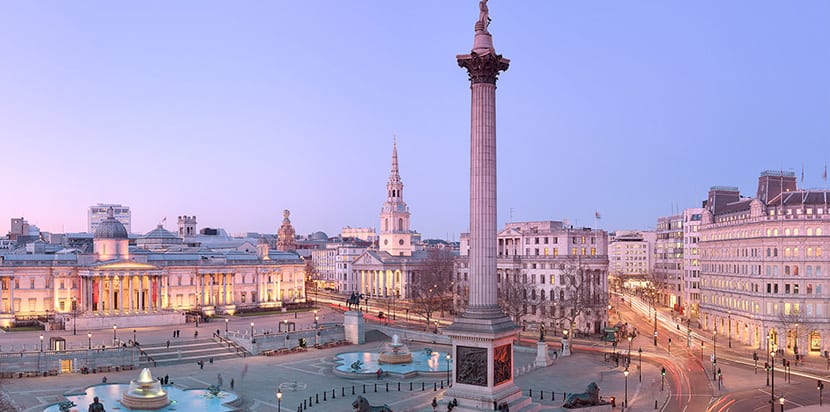
In the year 1876 the Imperial Measures they were located within the wall of the north terrace. Outside the cafe, in the square, you find information about them. Today you can still check old instruments and measurements and relate them to current yards or feet. These Imperial Measures moved when the staircase was built. Another "old" space is the old police booth that is to the southeast of the square, with its original lamp from 1826. Today it is a small warehouse but it is still there.
Over time the square has had some modifications: the north terrace is today pedestrianized and allows the union with the National Gallery, and a cafe, public toilets and access for people with disabilities.
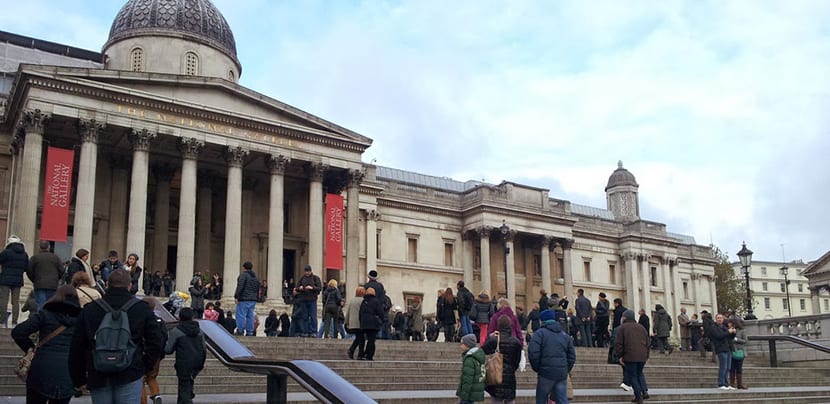
The truth is that a visit to Trafalgar Square is a very good idea because the square is surrounded by museums, cultural spaces and historical buildings not to be missed in London. And, perhaps, during your visit you can witness a protest or demonstration since it is usual that they take place here especially on weekends.
Also Christmas a fir tree is placed that is usually donated by the city of Oslo as a thank you for the English help during the Second World War.
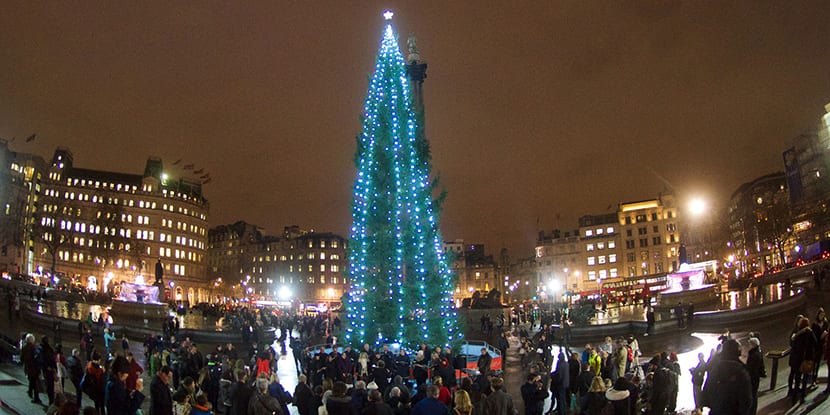
If you go at Christmas you will see this fir tree and if you go in New Year you can be one of the attendees to the celebrations of the new year. It is not a party organized by the city but people have taken the habit of coming here to celebrate. The same in the celebrations of the Chinese New Year and, naturally, whenever the Battle of Trafalgar is remembered on October 21 when the British Royal Navy Cadet Corps arrives.
How to get to Trafalgar Square
- You can get there by tube using the Bakerloo and Northern Lines, getting off at Charing Cross Station.
- Also by bus: 3, 6, 9, 11, 12, 13, 15, 23, 24, 53, 77A, 88, 91, 139, 159, 176, 453.